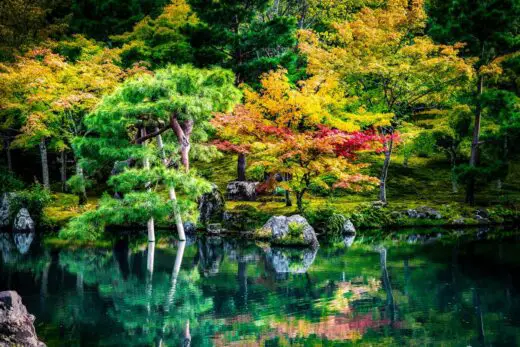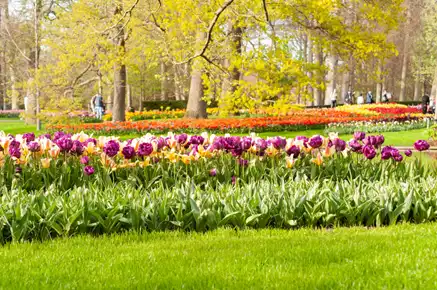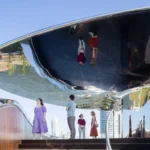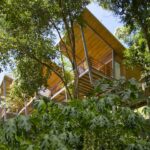Low-maintenance landscapes: dynamic designs that thrive with minimal intervention, home build advice, property
Low-Maintenance Landscapes: Dynamic Designs That Thrive with Minimal Intervention
May 21, 2025
Photo by Marcelo on Pexels
A beautifully crafted landscape doesn’t need incessant care to remain vibrant and welcoming. Low-maintenance landscaping involves establishing ecosystems that grow with their surroundings. These ecosystems use fewer resources and interventions while preserving aesthetic value. Below are three concepts that can transform your landscape into a lush, self-sufficient haven.
Embracing Native and Drought-Tolerant Plants
Drought-tolerant and indigenous plants are the backbone of carefree gardening because they have grown to survive environmental conditions in a local area with minimal human help. Such vegetation has deep-seated root structures designed to retrieve water from deep water sources, usually resulting in minimal need for secondary irrigation. Using local plants can limit ongoing maintenance like continuous watering, chemical fertilization, and chemical pest control.
With time, a well-planned native planting arrangement maintains itself. Leaf litter breaks down into healthier soil, and useful insects come to pollinate flowers and curb pests. Seasonal cycles of growth and dormancy proceed without human intervention. The outcome is a stable garden that stays healthy with light occasional pruning or weeding only, so you can have a lush outdoor sanctuary without carrying out heavy maintenance activities.
Incorporating Smart Hardscape Features
The addition of hardscape components to a garden can decrease maintenance significantly while adding structure and beauty. Carefully placed paths of permeable stone or gravel guide foot traffic and protect delicate plantings from being stepped on, eliminating the necessity for constant lawn repair. Mulched beds with edges created using natural stone or recycled brick retain soil and prevent weeds from growing, reducing the time spent hand-pulling undesired plants.
A raised patio or simple seating area is a warm focal point without much lawn or flower bed upkeep. Even decorative touches, such as large boulders, sculptural grasses, or a minimalist water feature, can be landscape anchors, diverting the eye away from spaces that would tend to fill in or migrate over time. This part of the design, though subtle, can be a guide to luxury landscape design by showing that beauty and low maintenance do not have to be mutually exclusive.
Taking Advantage of Mulch and Groundcovers to Control Weeds
Groundcovers and mulches both have two benefits: covering the soil moisture and inhibiting the growth of weeds. Bark chips are among the organic mulches that act as barriers when applied generously on the ground. These materials create a cover that prevents extreme changes in ground temperatures and evaporation and keeps plants moist with low water requirements. Natural mulch also decomposes gradually and introduces vital nutrients to the soil. This minimizes the use of chemical fertilizers. This natural process maintains the health of plants and long-term soil fertility.
Groundcovers give a classy solution to filling empty areas or areas where grass will not grow or where it is too much trouble to maintain. Groundcovers such as sedum, creeping thyme, or native perennials form a dense living mat that prevents weeds from growing and generates interest with foliage and flowers during various seasons. They are rarely mowed and have a dense growth habit. This makes weeding a rare task rather than a daily occurrence. With a well-implemented combination of efficient mulching and the right groundcovers, one can make the landscape weed-free and low-maintenance.
Endnote
A well-designed low-maintenance landscape merges aesthetics and function, flourishing with little care. Native plants thrive in their natural environment, and smart hardscaping provides lasting structure. Mulch and groundwater deter weeds and conserve water, promoting sustainability. Thoughtful design means your landscape remains dynamic and inviting for years to come.
Comments on this guide to Low-Maintenance Landscapes: Dynamic Designs That Thrive with Minimal Intervention article are welcome.
Lawn Landscape Design
Lawn Care Posts
Taking care of a lawn with weeds guide
Tools You Need to Maintain a Beautiful Lawn
How to Properly Take Care of Your Lawn
Landscape Posts
What is Landscape Architecture

Landscaping and garden design ideas for your outdoors
Top 3 factors for planning new landscape design
Building Articles
Residential Architecture
Comments / photos for the Low-Maintenance Landscapes: Dynamic Designs That Thrive with Minimal Intervention page welcome.





